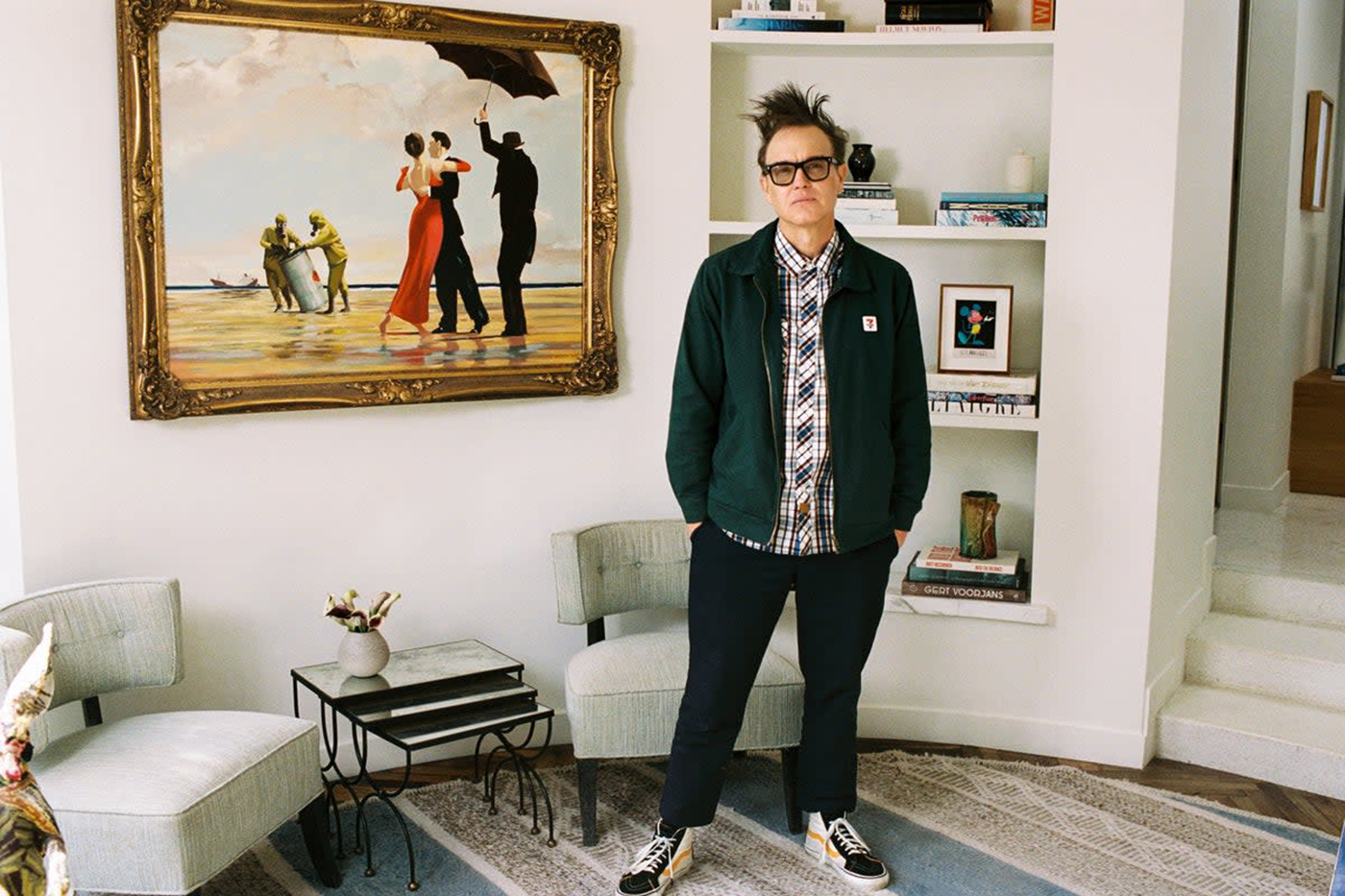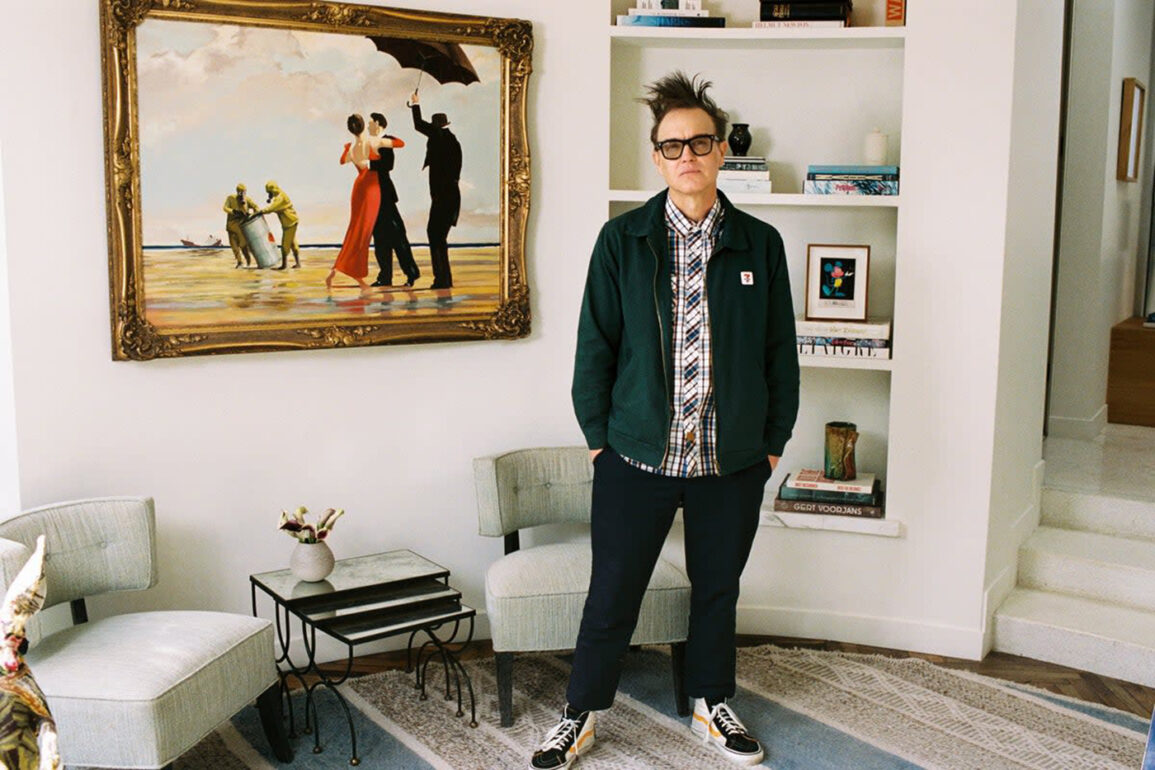
LONDON — When Mark Hoppus, a member of the pop-punk band Blink-182, found out the valuation of his rare Banksy painting, he took it off his wall, boxed it up and put it in storage.
Now, the British street artist’s work will be taken out of its “Raiders of the Lost Ark”-style warehouse and put up for sale. The proceeds will be divided between charities supporting those affected by the Los Angeles wildfires and investments in artwork by emerging artists.
Hoppus, the singer and bassist in the three-piece band known for songs such as “The Rock Show” and “I Miss You”, has not revealed how much he and his wife, Skye Everly, purchased “Crude Oil (Vettriano)” for in 2011. But art commentators speculate that it was likely around £250,000 ($316,000).
Fourteen years later, it has been estimated by auction house Sotheby’s to be worth 20 times that, with an asking price of £5 million ($6.3 million). “All The Small Things,” this isn’t.
“Crude Oil (Vettriano)” is a reimagining by the anonymous artist Jack Vettriano’s 1992 career-defining piece, “The Singing Butler.” The picture by the Scottish painter is the best-selling image in Britain.
Peter Maber, an art critic and associate professor at Northeastern University in London, says the painting is less homage than it is a satire of Vettriano’s dream-like image of two people dancing on a beach under umbrellas held up by a maid and a butler.
In Banksy’s take, the dancers and butler remain but in the background is a sinking oil tanker and a beach cleanup mission, with two people in hazmat suits taking away a barrel of oil.
“Part of the humor is the ruthless mocking of the artifice and the idealization of Vettriano’s oils,” Maber says. “It is very wonderful.”
Art historian Kate Grandjouan, an expert in political and social satire, says Banksy has managed to produce a “subversion” of the original painting’s meaning by “creating a juxtaposition of incompatible elements.”
“The word satire comes from ‘satura,’ which is Latin for a salad — a mixed bag of things. And that’s exactly what satire is,” says Grandjouan, who teaches on Northeastern’s London campus.
“Vettriano’s image conjures up love and romance, pristine environments and setting suns — a paradise we yearn for. And then you get Banksy’s image, which deflates the whole thing, which reminds us that this is actually what’s happening, that these are places that are under threat. So it is very clever.”
Editor’s Picks
Maber, who writes art reviews for the Times Literary Supplement and formerly ran a gallery, says the picture is a commentary on both the state of art and the environment, using oil as a pun to explore the themes of power and the permanent damage of pollution.
“There is the literal oil [paint] and the environmental catastrophe that is going on with the wrecked ship in the background,” Maber continues. “But there is also the idea of oil as a medium to tell a particular story. As the Marxist critic John Berger points out, oil painting is used because of its longevity, the fact that it doesn’t decay — unlike Banksy’s ephemeral graffiti, street art and prints.”
The different take on Vettriano’s scene represents a “more truthful reality,” argues Maber, than the “artificial absurdity of ballroom dancers on a beach” presented in the 1992 image.
Maber’s commentary chimes with what Banksy has himself said about the environment. He told the U.K.’s Channel 4 News in 2005: “The real damage done to our environment is not done by graffiti writers and drunken teenagers, but by big business … exactly the people who put gold-framed pictures of landscapes on their walls and try to tell the rest of us how to behave.”
Those comments came after he released a series of works that included “Crude Oil (Vettriano)” in which he put a satirical spin on famous paintings, depicting Vincent van Gogh’s “Sunflowers” as withering while reproducing Edward Hopper’s “Nighthawks” with the diner window smashed in.
Hoppus feels like his and Banksy’s art forms are kindred spirits. “I feel like street art and punk rock have the same core,” he has said. “The left-out and overlooked making their own reality. … Just go make art.”
And just like Hoppus’ radio-friendly form of skate-punk has mass appeal (Blink-182’s 1999 album “Enema of the State” has sold 15 million copies), so too does Banksy’s works in the art market.
Several have sold for multiple millions at auction. The record is $25.4 million paid in 2021 for “Love is in the Bin,” an image of a girl with a balloon that partially self-destructed during an auction three years earlier after a shredder was hidden within the frame.
“There’s a weird irony here,” Maber says, “that Banksy’s art, which is so anti-capitalist and so progressive, is bound up with this exchange of vast sums of money and all those investors who trade in his prints and so on. It is a weird kind of contradiction.”
California resident Hoppus has said in interviews that, as well as donating to charitable causes assisting with the Los Angeles wildfires recovery, he plans to invest proceeds of the sales into buying art by emerging artists.
The idea of what is popular in art being shaped by the buying public rather than wealthy patrons and royals emerged in Britain in the 1700s, Grandjouan explains, due to the rise of public displays.
“There’s a fundamental shift which happened in Britain in the 18th century,” Grandjouan says, “which is when you get a middle-class market for art.
“You get the beginnings of public exhibitions and you get an increasing number of people interested in art and wanting to own art. That in turn shapes the way that art is going to develop. It becomes this commercial art market where what survives and progresses is what most people want.
“If you can cater to contemporary taste, then you are going to succeed, and if you can’t cater to contemporary taste, then you are going to go down [in popularity]. We see that a lot — it is not about intrinsic merit, it is about what people want.”
At more than $6 million, whoever purchases Hoppus’ Banksy will have to really be “Feeling This.”
Arts & Entertainment
Recent Stories
This post was originally published on this site be sure to check out more of their content.









